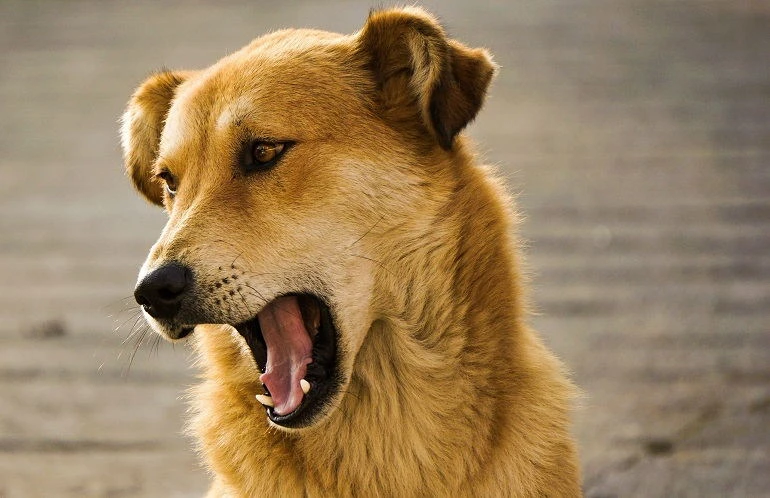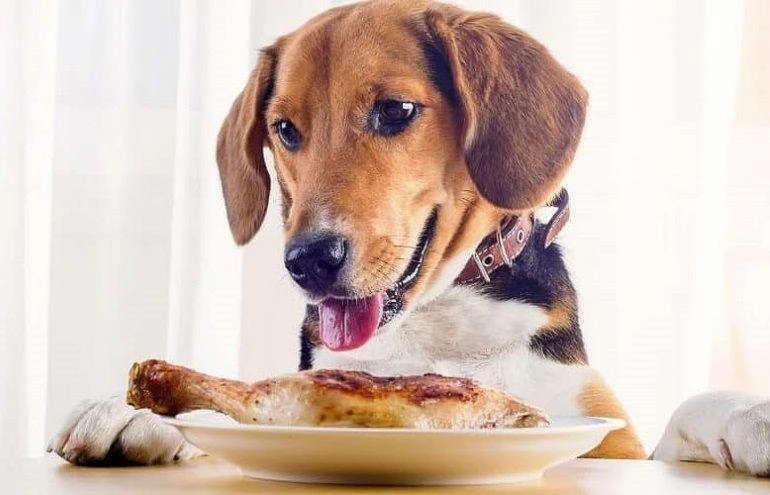What to Do If Your Dog Chokes on a Chicken Bone
by Patricia Jackson
Dogs love chewing bones, and you can be sure if yours runs into a chicken bone, it will find it irresistible. But while it is nutritious with lots of essential minerals, it also poses a significant risk for the pet as it can splinter and cause injuries. Therefore, before giving your pup chicken bones, you need to understand the risks involved and how to do it safely.

Are Chicken Bones Dangerous for Dog?
Dogs have been eating all kinds of bones for thousands of years, and so their digestive system handles them well enough. The chicken bones dissolve almost immediately they get to the stomach, leaving little room for them to cause any issues.
However, the danger in chicken bones comes from splintering during chewing. Given how soft these bones are, they easily shatter into small, sharp pieces that can injure the dog's mouth, throat, and even the digestive tract.
Also, if dogs try to swallow a chicken bone but it does not go all the way down, it can get lodged in the esophagus, which leads to drooling, retching, and gagging.
What to Do If Your Dog Chokes on a Chicken Bone

1. Remove the Bone
The first thing to do is try and clear the airways to ensure the canine can still breathe properly. On some occasions, you can even see the bone. Therefore, you can try pulling it out. But make sure you do it gently so as not to injure the dog further or cause more distress.
2. Do Not Induce Vomiting
Although it can be tempting to induce vomiting to remove the bone from the pet's system, you should not do it. Trying to force the dog to vomit makes it distressed and increases the likelihood of causing more damage to the esophagus as the sharp bone comes up.
3. Feed the Dog
It is advisable to feed your dog with something heavy, such as bread, to help provide a cushion for the sharp bones, ensuring they do not cause further damage. But, be cautious not to worsen the situation.
4. Call Your Vet
Another crucial step to take when your pup chokes on chicken bones is to call the vet as soon as possible. A veterinarian will advise you on how best to deal with the situation. Better still, take the dog to the vet as quickly as possible for a better assessment.
When Should I Worry?

You should keep a close eye on your pet if it ingests chicken bones to see how it reacts. If the bones get to the stomach, there is often nothing to worry about as their digestive system can handle them well.
However, if the bone is stuck in the esophagus or digestive tract, there is reason to get worried. Check for signs like sneezing and coughing as they indicate the bone is somewhere in the throat. For bones on the esophagus, the dog might vomit, have shallow breathing, and show signs of pain.
Signs of distress will likely occur in the first ten minutes after the pet swallows the bone, and once you notice them, immediate intervention is crucial.
Conclusion
Given how much dogs love bones, you can be sure they will want to chew chicken bones if they come across them. But, while they can swallow and digest them with no issues in many instances, sometimes they can cause serious problems.
Therefore, it is always good to take precautions to ensure your pup does not eat them. In case they eat the bones, you need to stay calm and watch out for signs of distress so you can intervene to help the canine or call your vet.
Sources
- What to Do if Your Dog Eats a Chicken Bone - American Kennel Club
 |
 |
 |
 |

About Patricia Jackson
Patricia just simply loves pets.
When she was eight years old, her parents got her a beautiful Maine Coon as a gift; and later an affectionate Husky.
Since then, she has raised them as her children; done minor first aid, taken in strays, administered antibiotics, bottle fed them when sick, and even midwifing.
Pat received her bachelor's degree in computer science at Univercity of Califronia Davis. She really hopes to transofrm her programming skills into something that really helpful for all pets someday. For now, lets just do that through writing.
Thoughts on "What to Do If Your Dog Chokes on a Chicken Bone"
 |
 |
 |
 |
Pet Care Tips
You can Get FREE Gifts. Furthermore, Free Items here. Disable Ad Blocker to receive them all.
Once done, hit anything below
 |
 |
 |
 |